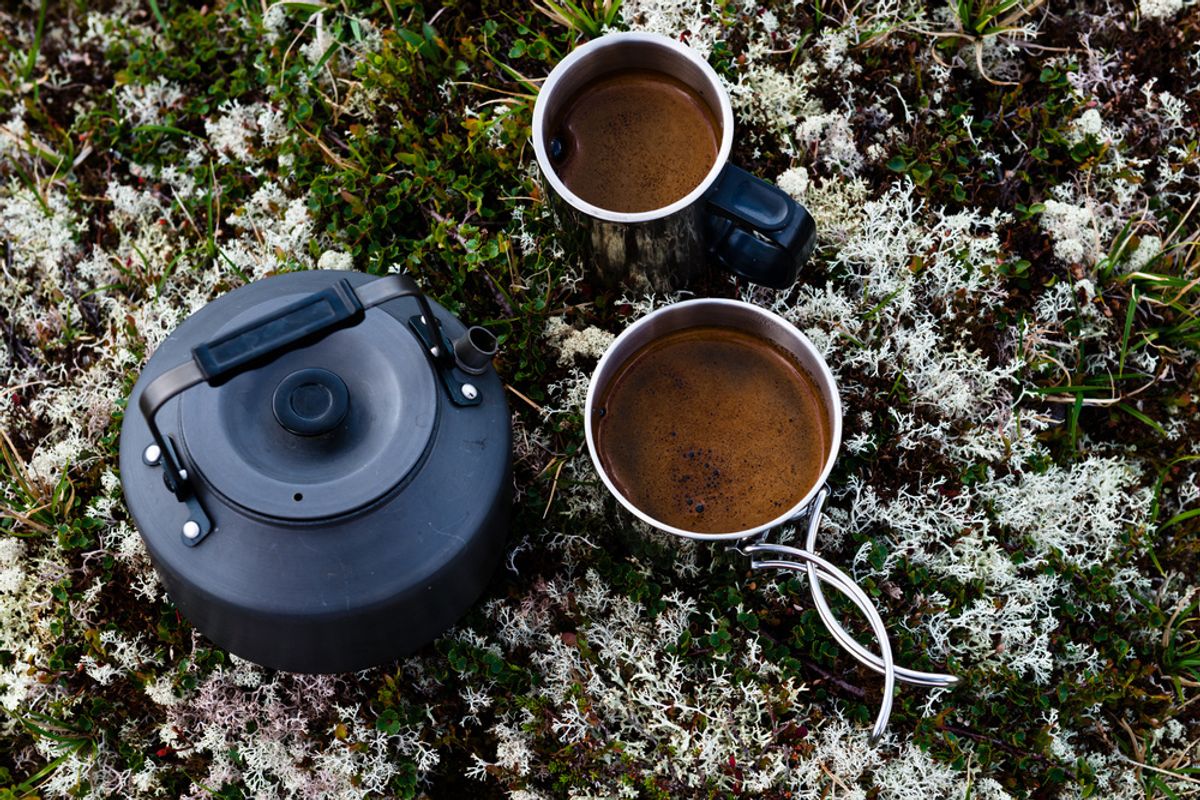No day begins without coffee, even if you're in the great outdoors.
The options are endless for brewing in the wild, but these are my tried-and-true methods for camp coffee. There is no one, correct way. I tend to use a variety of methods based on how much time I will have in the morning and how light I want to travel. Here is a comprehensive list to help you make the best decision for your adventure.
Terminology
- Serving size: Based on a typical 8 ounce serving. If you need more, plan accordingly.
- Price: Total cost for four servings and the device needed (think two people for two mornings)
- Weight: Total weight of the device and four servings of coffee
- Waste: What will you have to carry out
- Time: How long does it take to brew once the water is boiled
- Taste: On a scale of 1 to 10, 1 being terrible, 10 being delicious
Treeline Coffee Roasters Geo
- Brand: Treeline Coffee Roasters
- Serving: 1 disposable pour over = 8 ounce coffee
- Price: $8.00
- Weight: 2.4 oz (68 g)
- Waste: Carry out the wet disposable filter, coffee grounds, and packaging. Can leave it out to dry until you leave camp if you have time to decrease weight.
- Time: 2 minutes
- Taste: 7
- Brewing tips: use hot (just boiling) water and take the time to slowly pour it over for a stronger brew
- Pros: easy, tasty
- Cons: price, waste
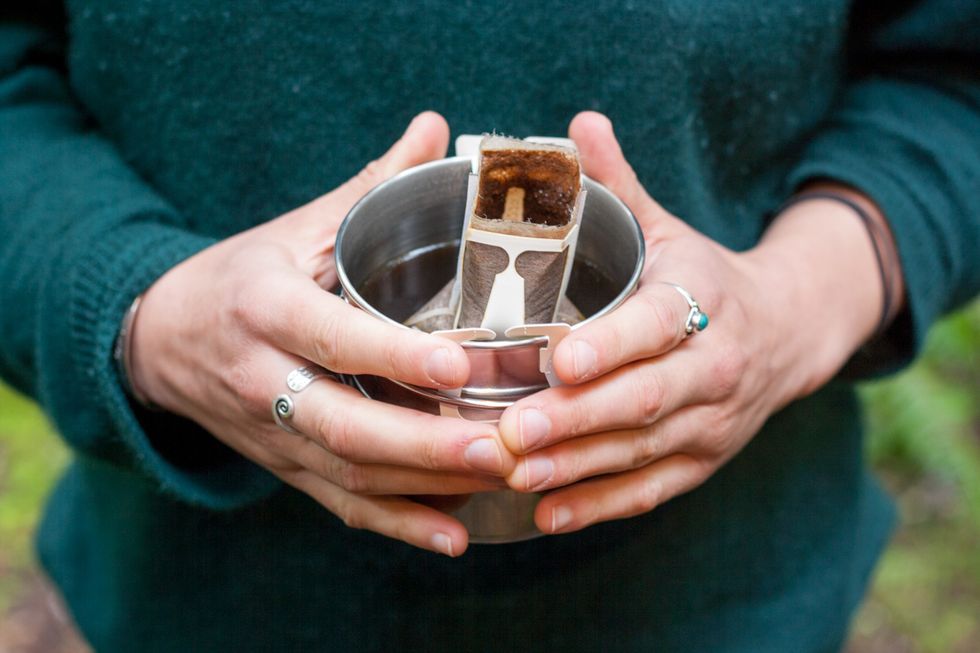

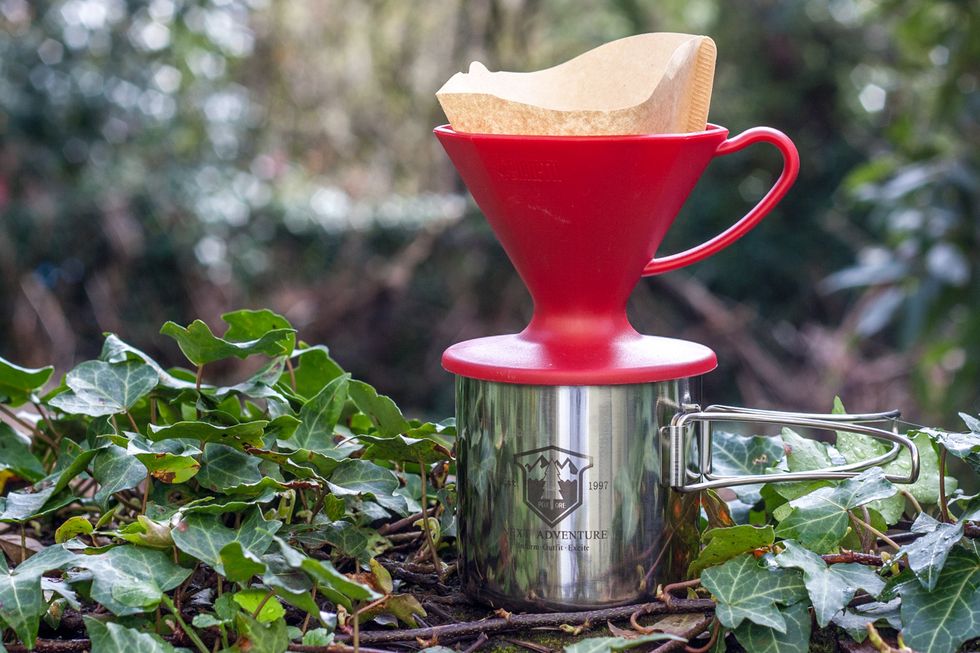
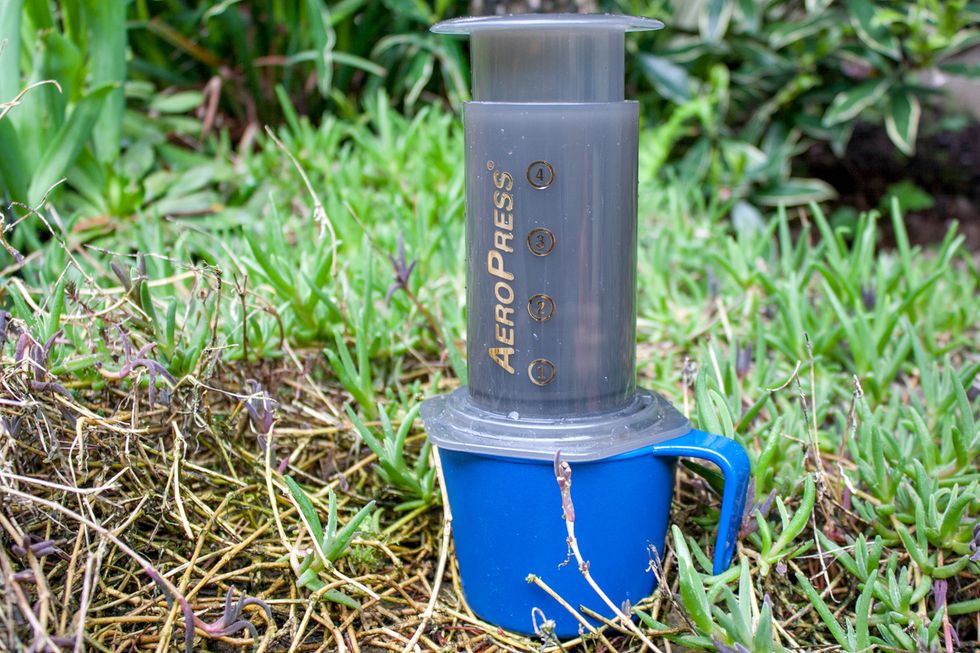
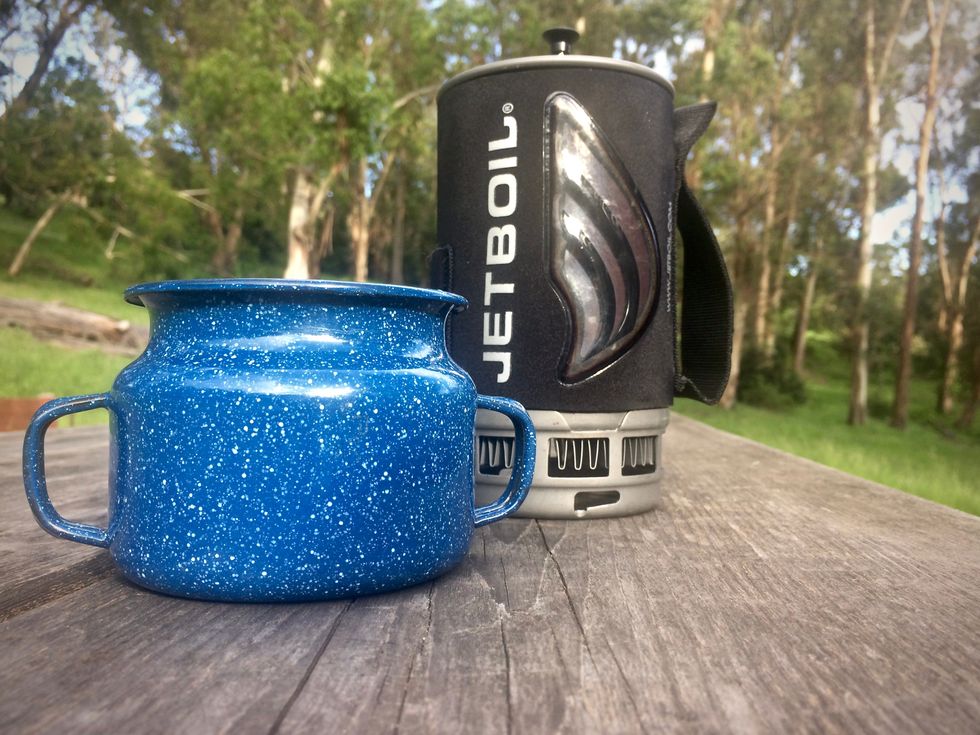
If you aren't a black coffee drinker, there are also many easily transportable ways to tone down your backcountry brew. You can bring powdered milk, powdered coconut milk, sugar, and other flavorings in a separate bag and add it in as desired.
A word on Leave No Trace ethics. I posed the question about whether or not it was good practice to disperse your coffee grounds to the folks at Leave No Trace (as we know, coffee is a great fertilizer after all) and here is their response: "We advise for grounds to be packed out. Even though they are biodegradable—much like apple cores, orange peels, etc.—they carry a strong smell that will attract wildlife to dig them up and become accustomed to checking backpackers sites for food scraps."
This article was written by Ariana Herrick-Kunitz for Outdoor Project.



